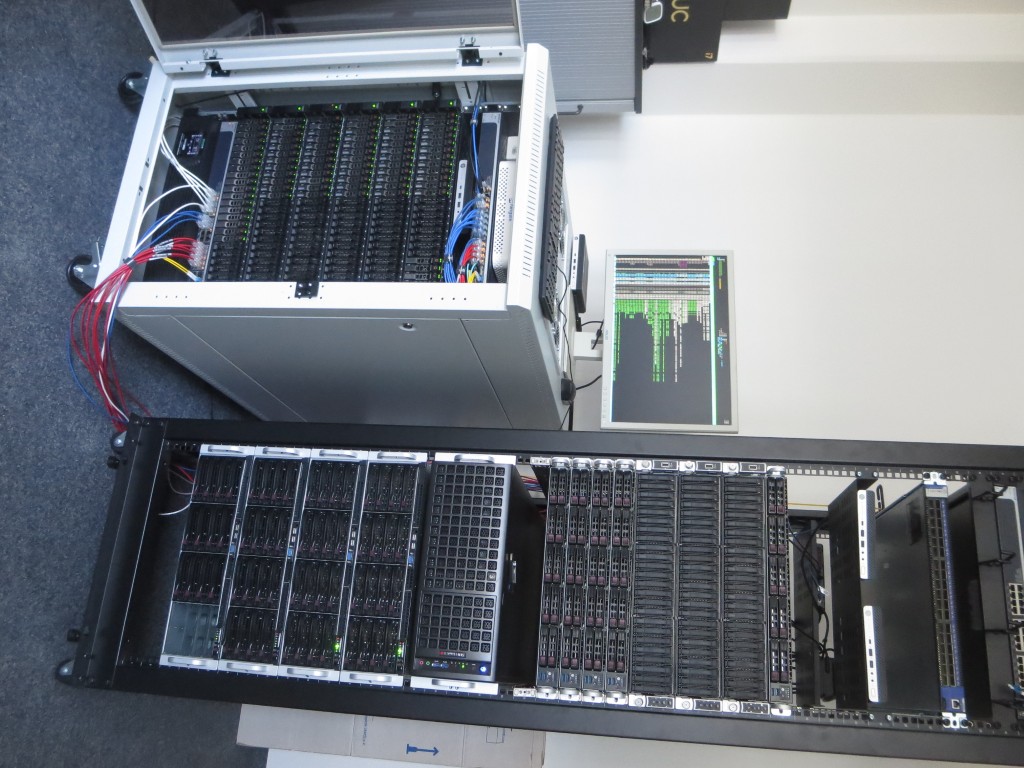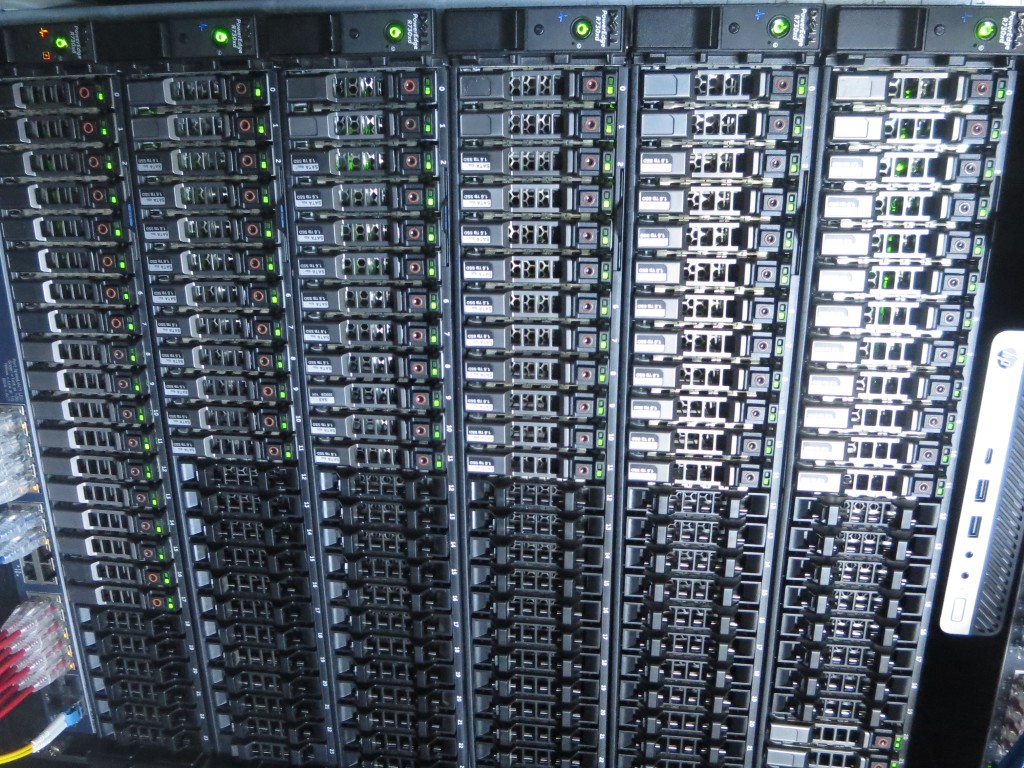Don't just talk the talk — show what's possible
Having a dedicated test lab is a powerful way to show customers what’s possible. When working with clients, being able to demonstrate real solutions in a live environment builds confidence and trust. Whether it's setting up a new network architecture, testing a failover system, or showcasing a new virtualization platform, my lab lets me go beyond theory and offer proof-of-concept demos that feel real and achievable.
By investing in my own hardware and network infrastructure, I can replicate customer scenarios, experiment with new technologies, and deliver informed recommendations based on hands-on experience — not just vendor whitepapers. Ultimately, the lab enables me to bridge the gap between ideas and implementation for the people I work with.

This test lab is designed with a few goals in mind:
Here’s a look at the core components that make up the heart of my lab
A Netgate 6100 firewall manages all incoming and outgoing traffic in the lab, running the open-source firewall OS, pfSense. While it's possible to build a custom pfSense system, I opted for an official Netgate appliance to ensure reliability and to support the ongoing development of the platform. The network is segmented into several VLANs to improve security, performance, and organization. Key VLANs include production server, test server, management & storage. The Netgate 6100, combined with pfSense's flexible VLAN and firewall rule management, allows me to easily route, segment, and secure traffic across the lab while keeping everything highly configurable for different testing scenarios.
For switching, I use Netgear ProSafe XS728T switches to provide the backbone of the lab network. These switches offer a solid balance of performance, reliability, and cost, critical factors when building a flexible yet professional-grade environment. Having 10GbE connectivity is essential for minimizing bottlenecks between servers, especially during heavy data transfers, backups, or testing software defined storage. The switches also support advanced features like VLANs, LACP link aggregation, QoS, and Layer 2+ static routing, giving me the flexibility to closely mirror real-world enterprise networking scenarios.
In each rack, two switches are interconnected using SFP+ fiber links. Each pair of switches is also connected via fiber uplinks to the firewall. On the firewall, the two SFP+ ports are configured as a trunk to aggregate bandwidth and carry multiple VLANs across a single logical link.
This keeps the topology simple but scalable. Adding a new server or a new VLAN is usually just a matter of plugging in and a little configuration.
The core compute resources in the lab are provided by five Dell PowerEdge R730xd servers. These are enterprise-grade, 2U rackmount servers that were selected because of their proven reliability, easy availability of replacement parts, and excellent support for linux, virtualization and storage. Together, the five servers provide a robust foundation for simulating complex infrastructure stacks and replicating production-like scenarios safely and efficiently. Three of the servers will be for testing VMWare alternatives, one will be a dedicated KVM server and the last one will be the promox host for all of my local services and virtual machines.
In addition the lab includes four Supermicro 1U servers. These compact systems are used for cluster testing, temporary installations, and scenarios that require higher compute density within a smaller footprint. The Supermicro nodes provide the flexibility to quickly spin up new clusters, simulate multi-node deployments, and test distributed applications, all critical capabilities when evaluating modern cloud-native or high-availability architectures.
As low power management nodes I use the Elitedesk mini PC's which allow some services to run outside of the virtual layer.
High-performance shared storage for the lab is provided by a dedicated Dell PowerEdge R730xd, configured with sixteen 4TB SSDs. This server runs TrueNAS SCALE, an open-source, Linux-based storage platform that offers excellent support for ZFS, snapshots and replication. This storage server delivers fast, reliable access to data for all lab workloads, including virtual machines, containerized environments, and large file transfers. The use of SSDs ensures minimal latency and high throughput, and the 10gGbE connections allow the lab to perform better that typical NAS solutions.
To support data protection and redundancy, two additional Supermicro 1U servers are equipped with large-capacity 3.5" spinning disks. These systems serve as replication targets and backup destinations for the main TrueNAS server, ensuring that lab data is safeguarded against hardware failure, accidental deletion, and other risks. This multi-tiered storage setup allows the lab to balance performance, capacity, and resiliency, key factors when testing infrastructure that mirrors production-grade deployments.

Nothing too exciting to report on here. The main component is a Xanto 1500R UPS which can provide power to the primary storage, network devices and the main service host in the event of a mains power failure. Make sure to pay attention to the power cables, define your aims before installing hardware and try to use a standard type of cable for each form factor. In order to monitor the amount of power being consumed the main power sockets are connected to zigbee power measuring adaptors which send the current wattage used to HomeAssistant.
The hardware is only half the story, here's what's running on top:
The lab runs a wide range of open-source platforms to replicate real-world environments, test new solutions, and support customer demonstrations. I am passionate about supporting FOSS (Free and Open Source Software) projects, with a strong focus on providing alternatives to the expensive monolithic vendors. This helps customers keep their licensing costs under control, or even eliminate them entirely.
Provisioning is a critical focus for me, based on years of experience managing hundreds of physical hosts. To streamline deployments, I use Canonical MAAS to provision operating systems directly onto bare metal. Even during the initial rack setup, this approach has saved countless hours. Recently, I’ve also been testing Metify Mojo, a new provisioning platform, and I look forward to sharing more insights as that testing progresses.
Virtualization and containerization form the foundation of the lab, those virtual machines and containers need somewhere to live. Proxmox VE is becoming increasingly viable for production workloads, and I use it for running local services. I also deployed Apache CloudStack, it is a fantastic orchestrator for hypervisor hosts and deserves its own detailed article. Having two or more virtualisation platforms also allows me to test v2v migration tools.
In order to stay aware of temperatures in the rack I have deployed a simple HomeAssistant setup and temperature/humidity sensors. This provides a modern dashboard which is available over the network.
Topics like backup strategies, IP address management, user access control, and infrastructure documentation will be explored in future posts. Thanks for reading — I hope this overview provides valuable insight into the goals and capabilities of the lab!
Oh, in case you are wondering about the other servers in the photo, I do not yet have a plan to deploy every host and some are for available for customers to also use for testing.